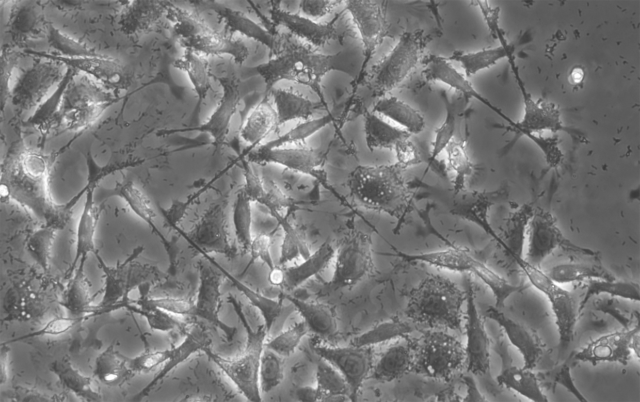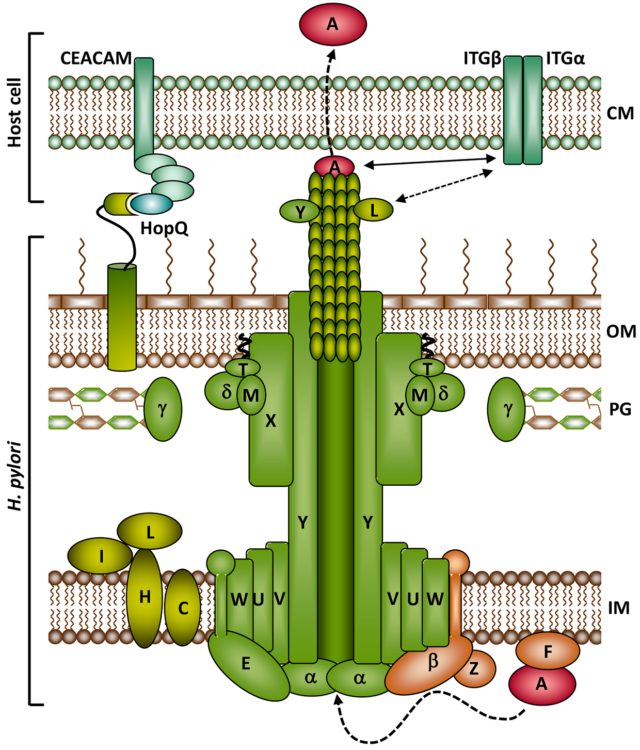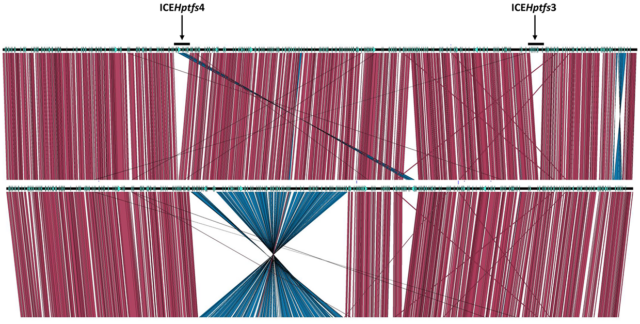Arbeitsgruppe Dr. Wolfgang Fischer
Die Arbeitsgruppe von Wolfgang Fischer beschäftigt sich mit der Aufklärung der molekularen Wirkungsweise von Typ IV-Protein-Sekretionssystemen des humanpathogenen Bakteriums Helicobacter pylori, das Erkrankungen wie chronische Gastritis, Duodenalulzera, oder Magenkrebs verursacht. Zwei wesentliche Prinzipien, wie solche Sekretionssysteme von Bakterien verwendet werden, sind die direkte Modulation befallener Wirtszellen mittels entsprechender injizierter Effektormoleküle, und der Austausch genetischen Materials über horizontalen Gentransfer. So sind das Cag- (cytotoxin-associated gene) Typ IV-Sekretionssystem und sein transloziertes Effektorprotein CagA gut etablierte Pathogenitätsfaktoren von H. pylori, die insbesondere für die Entstehung von Magenkrebs verantwortlich gemacht werden. Eines unserer Forschungsziele ist ein genaueres Verständnis des zugehörigen Typ IV-Sekretionsvorgangs auf molekularer Ebene. Ein zweiter Schwerpunkt unserer Arbeit ist die Untersuchung integrierender konjugativer Elemente (ICEs), also von Genominseln, die ebenfalls Typ IV-Sekretionssysteme für ihre Weiterverbreitung einsetzen, und darüber hinaus das Potenzial zur Bereitstellung zusätzlicher Wirts-Interaktionsfaktoren besitzen.





